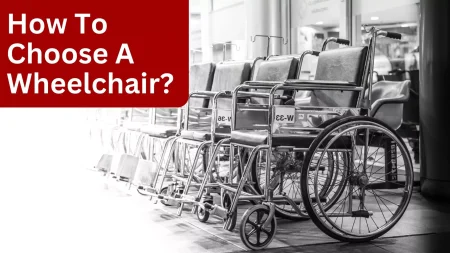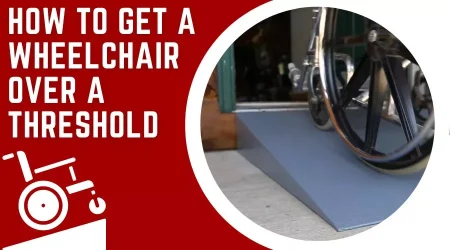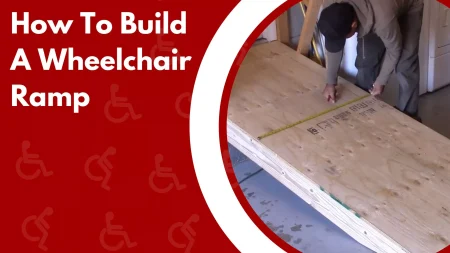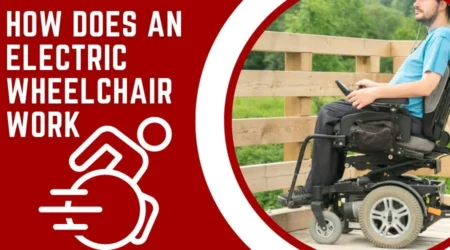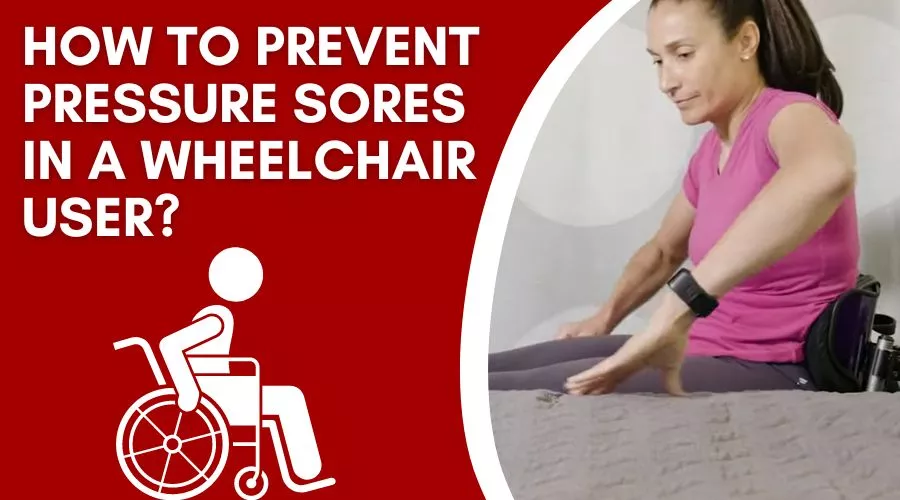
Pressure sores are also known as pressure ulcers and are a type of wound that develops when there is prolonged pressure on the skin for extended periods of time.
They usually occur in places such as the tailbone, hips, shoulder blades, or heels that have little subcutaneous fat and lack natural lubricant to keep skin from sticking to surfaces with friction.
A wheelchair user has an especially high risk of developing pressure sores because of the way their body is positioned for extended periods of time.
Easy Way For How to Prevent Pressure Sores in a Wheelchair?
Sit on a foam or gel seat cushion that fits your wheelchair. Natural sheepskin pads are also helpful to reduce pressure on the skin. Do not sit on a donut-shaped cushion. You or your caregiver should shift your weight in your wheelchair every 15 to 20 minutes
To prevent them from happening, here are FIVE WAYS you can take action and reduce your risk.
How To Prevent Pressure Sores In A Wheelchair
Change Your Position
Changing your position may be a quick and easy fix to relieve pressure.
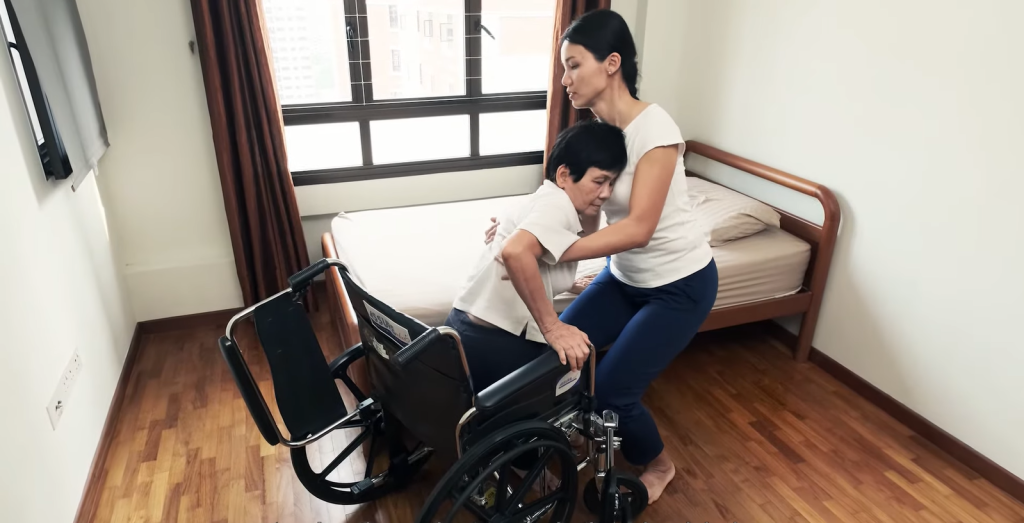
If you’re experiencing pain in a certain area, consider trying one of these ways to reposition your body.
Use A Wheelchair Cushion With Air Ventilation
A wheelchair cushion with air ventilation can help reduce pressure on your body, especially if you tend to have issues with swelling.
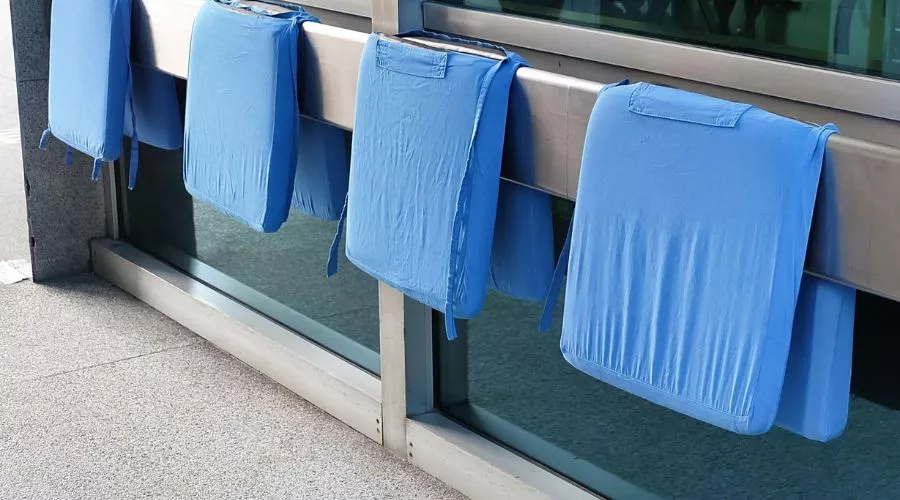
With this type of cushion, the open cells have a mesh weave that lets air flow through and keeps your skin from getting too hot or sweaty.
Another option is a wheelchair cushion with pressure-relieving gel.
This type of cushion is intended to sit below the tissue layer, so it does not matter if the surface you rest on is hard or soft.
The gel provides gentle pressure that conforms to the curves of your body to take pressure off the sensitive areas where skin may be stuck to the surface.
Use A Wheelchair Cushion With Pressure-relieving Gel
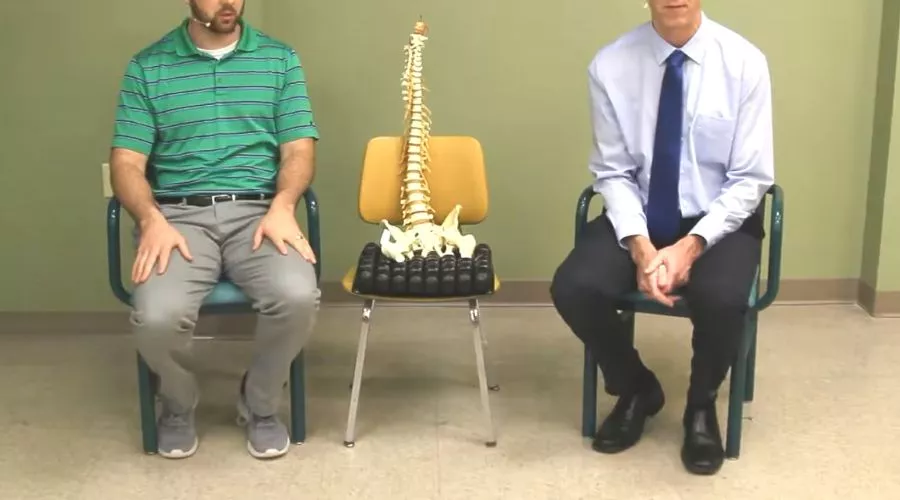
A wheelchair cushion with pressure-relieving gel can help relieve pressure from your skin, such as your hips and tailbone.
If your hips are what is experiencing pressure, a gel-topped cushion might be a good option for you.
When you sit on the cushion, your hips will sink into the gel, relieving the pressure that your skin is experiencing.
The same goes when you are laying down on the cushion. The gel will be right below your skin, and your skin will not be experiencing any pressure.
If you notice that your skin is sticking to the surface of your wheelchair, then you might want a cushion with pressure-relieving gel.
This type of cushion will help keep the pressure off your skin and prevent a pressure sore from forming.
Add A Foam Insert To Your Chair
You can also add a foam insert to your wheelchair if the standard cushion is not enough to relieve pressure.
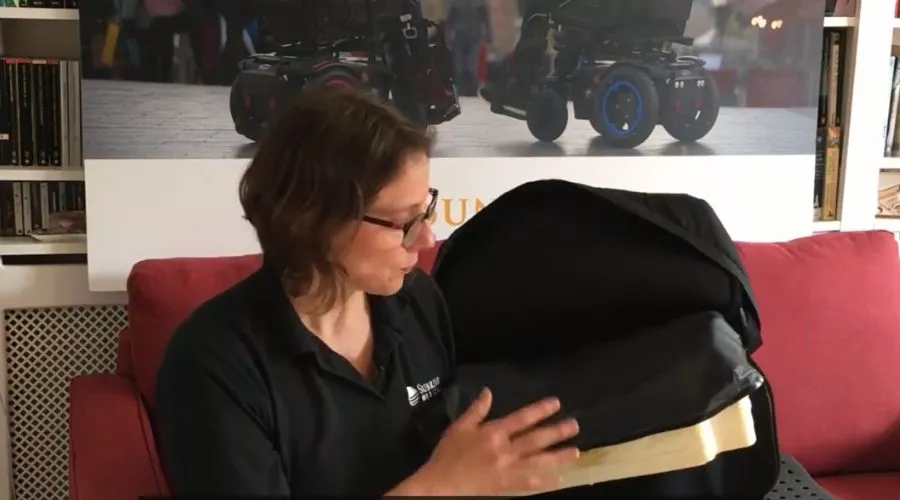
Foam is a great pressure reducer, and it can be used to cover a hard surface or be placed between your skin and a hard surface to prevent sore spots from forming.
If you use a foam insert, make sure that it is not too thick, as it may make it difficult for you to transfer from your wheelchair to another surface.
You may also want to put a thin cushion on top of the foam for comfort.
You can also use a gel pad, which is a good pressure reducer since it does not compress like other types of foam.
Check Your Skin For Signs Of Pressure Sores
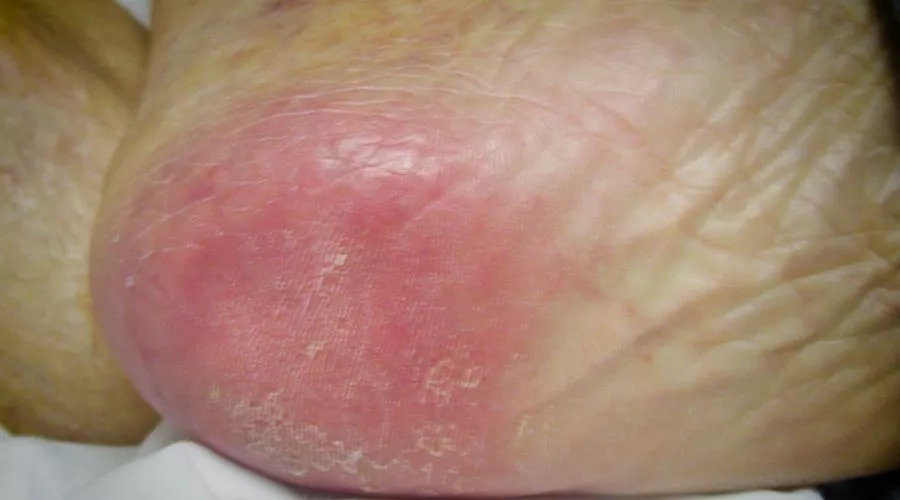
While it is important to prevent pressure sores from happening in the first place, it is also crucial to check your skin for signs of a pressure sore.
If you notice your skin is starting to look red, is warm to the touch, or is beginning to feel painful, it is important that you take action as soon as possible.
If you do not take care of a sore, it may become infected and lead to more serious health complications.
To properly care for a pressure sore, you will need to make sure it is clean, dry, and free of bacteria.
You may even need to apply a cream or ointment to protect the sore and speed up the healing process.
You can protect yourself from pressure sores by making sure your skin stays clean, dry, and free of bacteria.
You can also decrease pressure by repositioning your body and wheelchair often, adjusting the height of your chair, and using a cushion with pressure-relieving gel.
What is the best wheelchair cushion for pressure sores?
The best wheelchair cushion for pressure sores will depend on the individual’s needs and preferences. Here are a few options to consider:
- Gel cushion: Gel cushions are made of a gel substance that is designed to evenly distribute pressure and reduce the risk of pressure sores.
- Air cushion: Air cushions use air cells to distribute pressure and reduce the risk of pressure sores.
- Foam cushion: Foam cushions are made of high-density foam that provides good pressure relief and comfort.
- Dynamic cushion: Dynamic cushions use air or gel and adjust to the user’s movements, reducing pressure and the risk of pressure sores.
- Coccyx cushion: Coccyx cushions have a cut-out area to relieve pressure on the tailbone and reduce the risk of pressure sores in that area.
It’s important to note that using a cushion alone may not be enough to prevent pressure sores, and that a combination of proper positioning, good posture, and regular movement is also important. It is always best to consult a healthcare professional for personalized recommendations on the best cushion for an individual’s needs.
Conclusion
Pressure sores are a risk for anyone sitting in a wheelchair, especially people who spend long periods of time in the chair each day.
To prevent them, you should take steps to reposition your body and use a cushion with pressure-relieving gel.
If you notice your skin is starting to get red or warm to the touch, it is important to check for signs of pressure sores and take care of them as soon as possible.
With these seven ways to prevent pressure sores, you can reduce your risk and enjoy your time in the wheelchair.
Frequently Asked Questions
How can an immobile patient prevent pressure ulcers?
One of the most important ways that an immobile patient can prevent pressure ulcers is to ensure proper positioning. Patients should be positioned regularly, with special attention paid to areas where bony prominences are present, such as elbows and heels. Ensuring good posture while in bed or on a chair can help reduce tissue compression and improve circulation. Additionally, using cushioned surfaces when possible can also help reduce friction between skin and mattress/chair surfaces.
Can you get pressure sores from a wheelchair?
Yes, you can get pressure sores from a wheelchair. To help prevent this, use cushions designed for wheelchair users to help reduce friction and redistribute pressure points. Ensure that the cushion is wide enough and long enough to provide adequate support for your entire body. Additionally, make sure the cushion is comfortable and fits well in the chair; it should not be too high or too low. Lastly, regularly check yourself for signs of skin irritation such as redness or blisters after using the wheelchair. If any are present, seek medical attention right away.
What are 4 ways to prevent pressure ulcers?
1. Change positions regularly – Make sure to move or re-position your body every few hours, paying special attention to areas with bony prominences such as elbows and heels.
2. Use cushioned surfaces – When possible, use cushions or other materials on sleep and seating surfaces to help redistribute pressure points and reduce friction between the skin and the surface of the mattress/chair.
3. Stay hydrated – Drinking water throughout the day can help keep skin healthy and promote healing of existing sores if any are present.
4. Regularly apply moisturizing lotion – Applying a good moisturizer can help protect the skin from irritation caused by dryness and keep it healthy overall.

